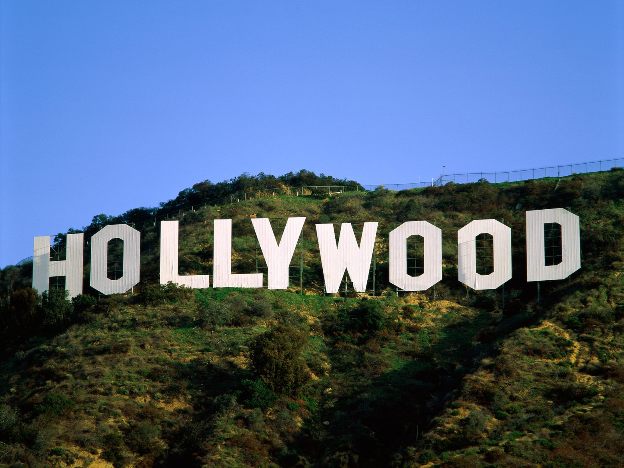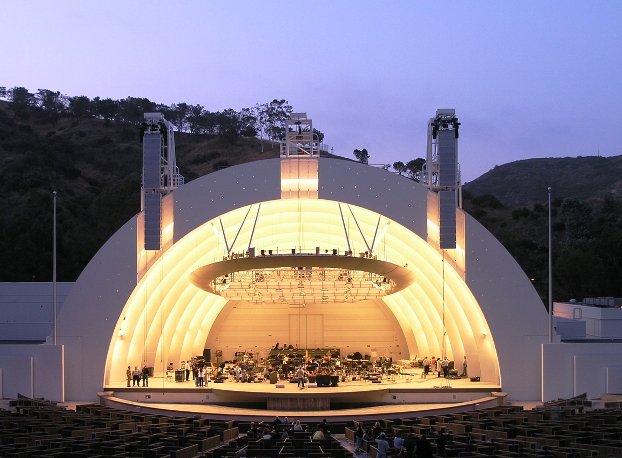After showbiz pioneers Cecil B. DeMille and Jesse Lasky were drawn to the climate-blessed West Coast in 1911, Hollywood ceased being a real place and became a concept, a glittering Tinseltown synonymous with glamour and ambition. However, it has long been true that the only stars you are now likely to see on Hollywood Boulevard (premieres aside) are those embedded in the pavement. Known as the Walk of Fame, the pathway honours 2,200 or so legends of film, television, radio, theatee and recording art, and runs along Hollywood Boulevard from La Brea Avenue to Vine Street, where it turns left and heads down to Sunset Boulevard.

Known as the Walk of Fame, the pathway honours 2,200 or so legends of film, television, radio, theatee and recording art, and runs along Hollywood Boulevard from La Brea Avenue to Vine Street, where it turns left and heads down to Sunset Boulevard.
But Hollywood is currently in the midst of a Times Square–like revival, with new attractions that are actually luring highbrow locals and celebrities to an area that for decades has been known as grotty and rife with riffraff and cheap tourist shops. A major catalyst of the upgrade and mainstay of the neighbourhood is the Hollywood & Highland Center, a stylish complex and shopping mall that pays homage to its surroundings with whimsical tributes to Hollywood’s heritage, such as a red-carpet-like pathway embedded with quotes from industry insiders. Its centrepiece is the Kodak Theatre. Take a guided tour and get a behind-the-scenes view of the 3,400-seat theatre designed as the permanent home for the Academy Awards.
From here, it’s an easy walk to Grauman’s Chinese Theater, a movie palace of a bygone era built to impress. This historic landmark still shows new releases and regularly hosts premieres, but it’s most visited for its fabulous Asian design and an impressive collection of handprints and footprints of some of Hollywood’s best-known stars from 1927 to the present. Of the 160-some imprints, look for those of Mary Pickford, Elizabeth Taylor, Frank Sinatra and Marilyn Monroe. Other prints lean towards the odd: Jimmy Durante’s nose, George Burns’s cigar and R2D2’s wheels.

While many of the major studios are located elsewhere (such as Studio City in the San Fernando Valley), filmmaking has been going on at nearby Paramount since the 1920s, and you can experience it through tours or tapings of live TV shows. But for the best glimpse of how films are made, head over the Hollywood Hills to Universal Studios in Universal City.
Though it’s been a working studio for decades, it has become a major tourist destination thanks to its popular tour of the world’s largest television and film studio. Suitable for the whole family, sceptics included, the tour includes special-effects rides that let you experience an avalanche and an earthquake, thrill rides that get you up close to the Jurassic Park dinosaurs and tales of the amazing world of filmmaking.
Whether you’ll actually have a star-sighting during your tour is questionable. But some spots around town have relatively decent odds. One such place is the historic Hollywood Roosevelt Hotel. A celebrity hangout for 75 years, and host to the first Academy Awards in 1929, the hotel just had a full-blown facelift, and its high-beamed art deco lobby, decorated swimming pool by David Hockney, smartly redone bars and well-regarded jazz club, Cinegrill, are all star attractions.
And don’t forget to look for that famous ‘Hollywood’ sign. The 50-foot-high sign was placed on top of Mount Lee in the Hollywood Hills in 1923 as part of a promotion for a real estate development called Hollywoodland. The last syllable detached and crashed during a landslide, but the 450-foot-long part that remains has been restored and elevated to landmark status. The best view is from Sunset Boulevard and Bronson Avenue: so get your cameras out!
